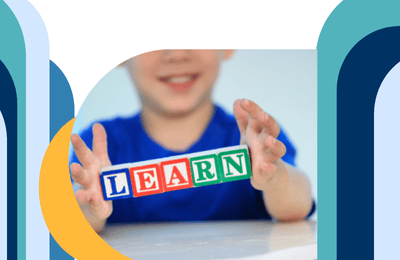Preparing for an SNA Interview with sample questions
Congratulations on being invited to interview for the role of an SNA! This is an exciting opportunity, and to ensure you present yourself and your skills effectively, proper interview preparation is key. Don’t stress – this article is here to guide you through the process and help you feel confident and prepared for your interview. Let’s get started!
During interviews for this role, interviewers will likely ask targeted questions to gauge your relevant skills and qualities. Reviewing a thorough list of possible questions can help boost your confidence and readiness for the interview. Start by understanding the questions and using the STAR method for competency-based inquiries.
Use the STAR Method for Competency-Based Questions:
Situation: Describe the context or situation you were in.
Task: Explain the specific task or challenge you faced.
Action: Detail the actions you took to address the situation or complete the task.
Result: Share the outcome of your actions and any lessons learned.
Tailor your responses to highlight relevant skills like communication, empathy, and teamwork, drawing from past experiences that demonstrate your suitability for the role. Be ready to discuss supporting students with special needs, collaborating with teachers, managing behaviours, and fostering inclusion. Stay positive, confident, and don’t hesitate to ask for clarification if needed. Practise your responses and familiarise yourself with the SNA role. With preparation and a positive mindset, you’ll be well-equipped to shine in your SNA interview.
In this article, we outline some common SNA interview questions and provide six \ sample answers to assist in your preparation.
Some common Questions
- How have your previous positions prepared you for this role?
- Do you have experience as an SNA , tell us about your role there?
- Have you any voluntary experience working with children with Special Education needs? Tell us about that experience?How do you feel about assisting pupils with toileting and general hygiene?
- How do you think your own life experiences help you in your role as an SNA?
- Can you describe a time when you had to support a child with special needs in a challenging situation? How did you handle it, and what was the outcome?
- What are the greatest challenges you have faced in and out of the classroom?
- How do you assist a child with profound communication difficulties?
- What has been the most rewarding aspect of your career so far?
- How do you approach activities outside the classroom, such as school events, school tours or outdoor learning activities?
- What are the most relevant health and safety issues an SNA needs to be aware of?
Question 1:
“Can you describe a time when you had to support a child with special needs in a challenging situation? How did you handle it, and what was the outcome?”
Sample Answer:
“There was an instance where I was supporting a child with autism in a mainstream classroom. The child had difficulty transitioning between activities, which often led to distress. One particular day, the child became very upset when it was time to switch from a preferred activity to a less favoured one. I calmly approached the child and used a visual schedule, which we had previously established, to remind him of the daily routine. I also gave him a few minutes’ warning before the transition, using a timer to visually and audibly signal the change.
To further ease the transition, I provided a sensory toy to help manage his anxiety. I communicated with the classroom teacher to slightly adjust the schedule, allowing the child a bit more time to finish the preferred activity before moving on. This approach helped the child feel more in control and reduced his anxiety.
The outcome was positive; the child successfully transitioned with minimal distress, and over time, he became more comfortable with changes in activities due to the consistent use of these strategies. This experience underscored the importance of personalised support and proactive planning in effectively assisting children with special needs.”
Question 2 How do you assist a child with profound communication difficulties?
Sample Answer:
“Assisting a child with profound communication difficulties involves a combination of personalised strategies and collaboration. I start by understanding the child’s specific needs through close collaboration with speech therapists, teachers, and parents. I use assistive technology like speech-generating devices and visual aids such as PECS and visual schedules to facilitate communication. Incorporating sign language and gestures can also be effective. Creating a supportive environment where the child feels comfortable and celebrated for their communication efforts is key. For instance, using a tablet-based app and PECS significantly improved a child’s ability to express needs and engage in classroom activities, showing the importance of consistency and collaboration.”
Question 3 Can you describe some support strategies you might use as an SNA?”
Sample Answer:
Certainly. As an SNA, I use several strategies to support students. First, I review and follow each student’s Individualised Education Plan (IEP) to tailor my support. I use visual aids like picture schedules to help students understand routines and transitions. For those with communication difficulties, I incorporate assistive technologies such as speech-generating devices. Positive behaviour support, like praising desired behaviours, helps manage challenging situations. I also include sensory breaks for students who need to self-regulate. Collaboration with teachers, therapists, and parents ensures a consistent approach, and I adapt instructions to make learning materials more accessible. Building trusting relationships and providing emotional support are also key. For example, I used visual schedules and sensory breaks to help a student with autism transition between activities more comfortably, improving their classroom experience.”
Question 4 What are the most relevant health and safety issues an SNA needs to be aware of?”
Sample Answer:
“As an SNA, I prioritise several key health and safety considerations. First and foremost is understanding each student’s medical conditions and knowing the appropriate emergency procedures. This includes being prepared to assist with medication administration or responding to situations like seizures or allergic reactions.
Secondly, maintaining proper hygiene and infection control is essential. I encourage and assist students with personal hygiene routines to prevent the spread of infections and ensure a clean classroom environment.
Another critical aspect is managing behavioural safety. This involves being trained in de-escalation techniques and ensuring that the physical environment is safe and conducive to students’ well-being.
Physical safety is also a priority. I’m vigilant about identifying and addressing potential hazards in the classroom to prevent accidents, especially for students with mobility challenges.
Additionally, being aware of students’ mental health and emotional well-being is crucial. I strive to provide emotional support and create a supportive environment to address any emotional distress or mental health concerns.
Maintaining confidentiality and privacy of students’ information is paramount, as is being proficient in using specialised equipment and staying updated on training.
Lastly, I ensure readiness for emergencies by familiarising myself with evacuation plans and actively participating in emergency drills. Overall, my focus is on creating a safe, healthy, and supportive learning environment for all students.”
Question 5 How do you approach activities outside the classroom, such as school events, school tours, or outdoor learning activities?
Sample Answer:
My approach to such activities is centred on ensuring inclusivity, safety, and meaningful participation for all students.
Firstly, I collaborate closely with teachers and other staff members to understand the specific objectives and logistics of each event or activity. This allows me to tailor my support to meet the individual needs of students and ensure they can fully participate.
For school events, such as assemblies or performances, I proactively anticipate any potential challenges, such as sensory overload for students with sensory sensitivities, and implement strategies to mitigate them. This might involve providing sensory tools or creating a quiet space where students can take a break if needed.
During school tours, I work to make the experience accessible for all students, regardless of their abilities or mobility restrictions. This might involve arranging for transportation accommodations or ensuring that venues are wheelchair accessible.
Outdoor learning activities offer unique opportunities for hands-on exploration and discovery. I actively engage students with diverse learning styles and abilities by incorporating multisensory experiences and providing additional support as needed. For example, I might offer verbal descriptions or tactile cues to enhance understanding for students with visual impairments.
Safety is always a top priority during any off-site activity. I maintain vigilance and adhere to safety protocols to ensure the well-being of all students. Additionally, I foster a culture of respect and inclusivity, encouraging peer support and collaboration among students.
Question 6 How does an SNA work with a teacher for the overall benefit of a child?
Sample Answer:
“Collaboration between an SNA and a teacher is essential for maximising the overall benefit of a child. We work as a team to ensure that the child receives comprehensive support and opportunities for growth.
Firstly, communication is key. I maintain open lines of communication with the teacher to understand the child’s individual needs, strengths, and areas for development. This allows us to align our efforts and interventions effectively.
Additionally, I support the teacher in implementing educational plans and strategies tailored to the child’s needs. This might involve assisting with differentiated instruction, modifying classroom materials, or providing one-on-one support during lessons.
Furthermore, I actively observe and assess the child’s progress and behaviour in the classroom, providing valuable insights to the teacher. This collaborative approach enables us to make informed decisions and adjustments to support the child’s learning and development.
Outside of the classroom, I collaborate with the teacher to plan and facilitate interventions or accommodations as needed. Whether it’s creating visual supports, conducting social skills activities, or coordinating with other professionals, our partnership ensures a holistic approach to the child’s education and well-being.
Ultimately, by working closely together, the SNA and teacher can create a supportive and inclusive classroom environment where every child has the opportunity to thrive academically, socially, and emotionally.”




















